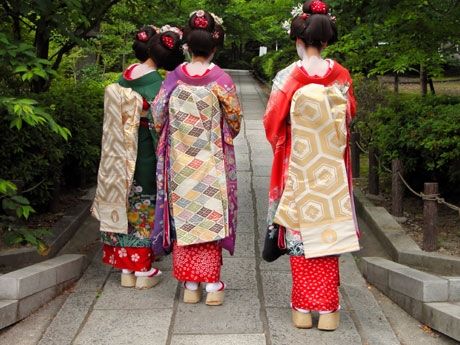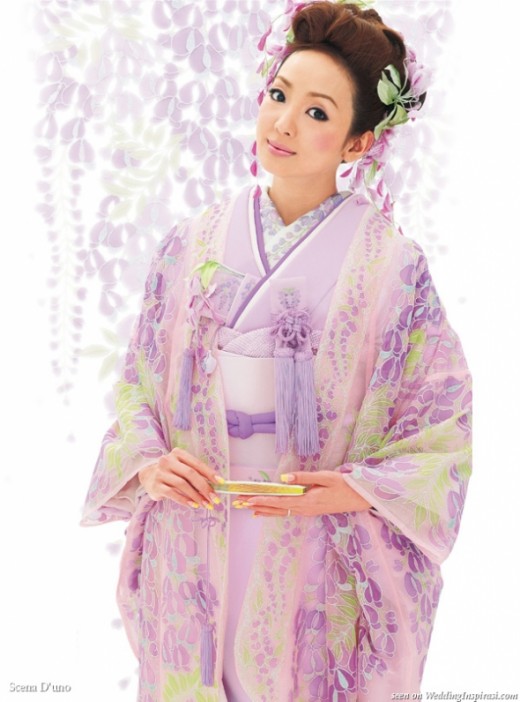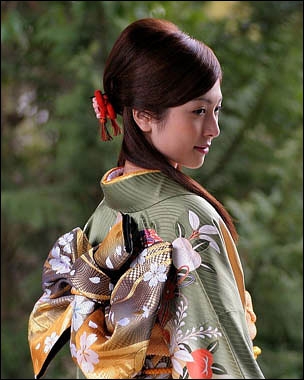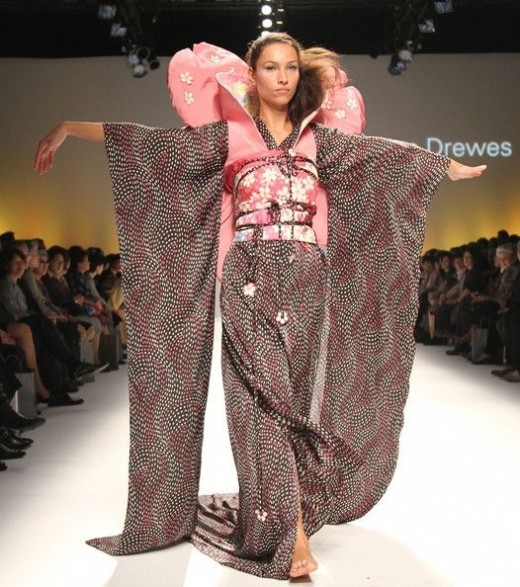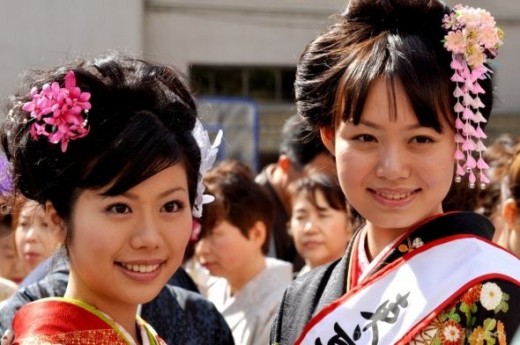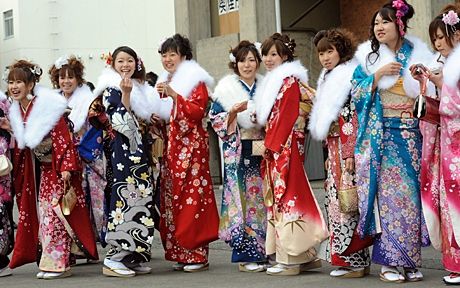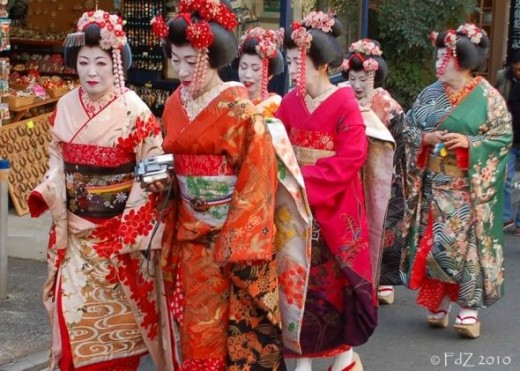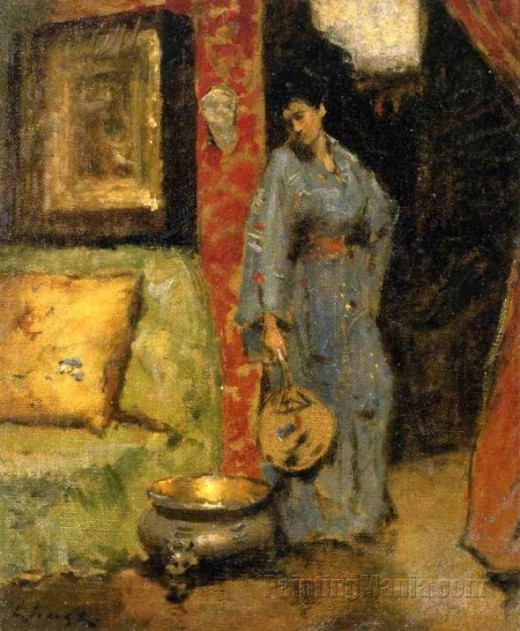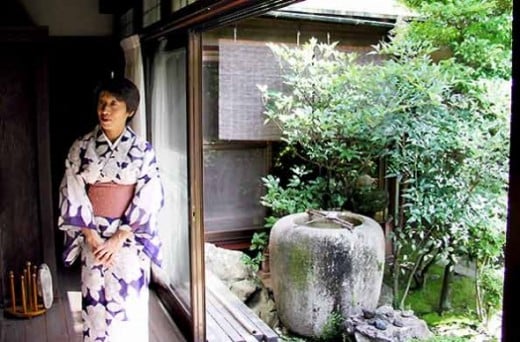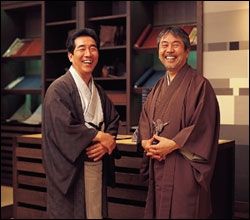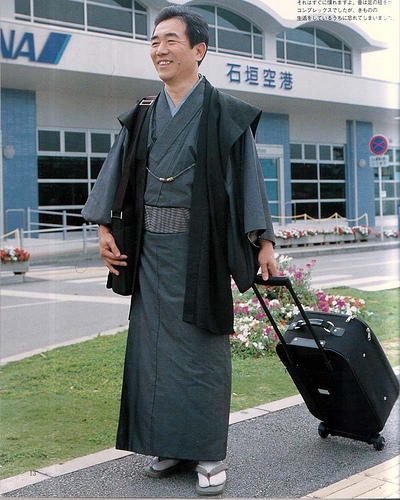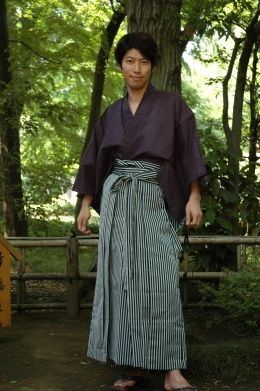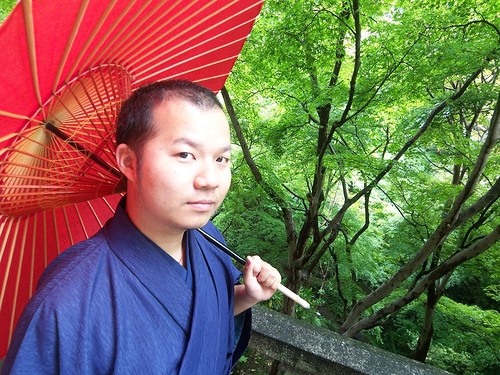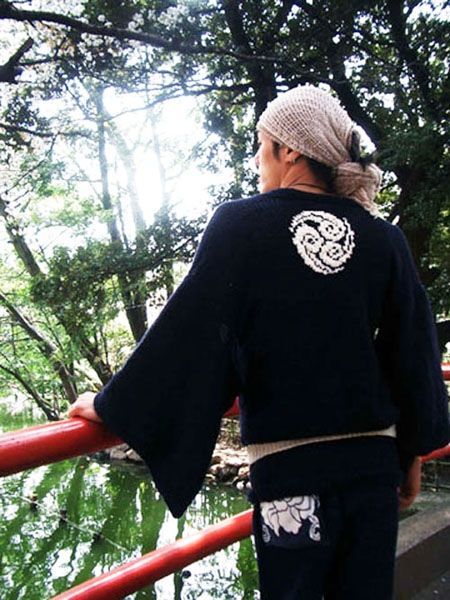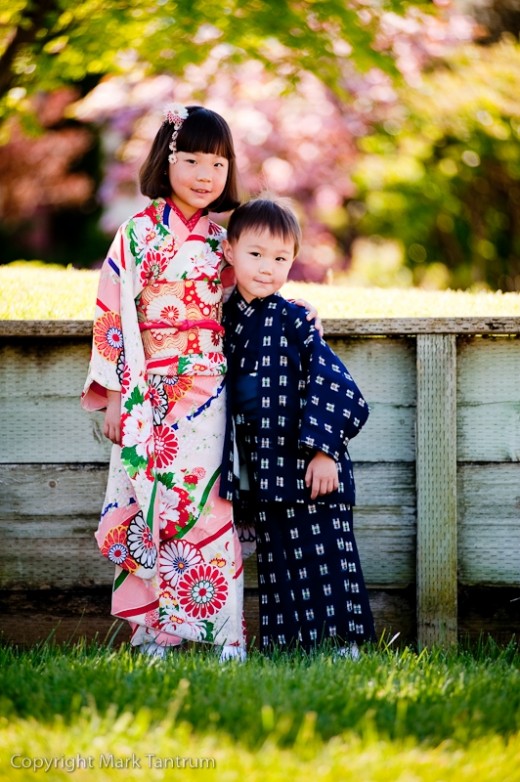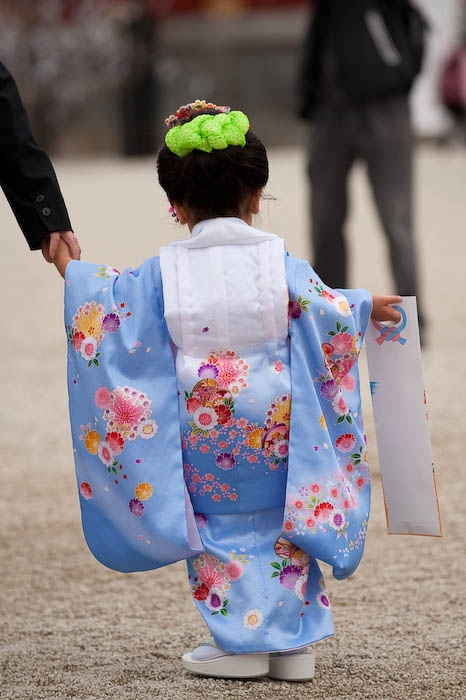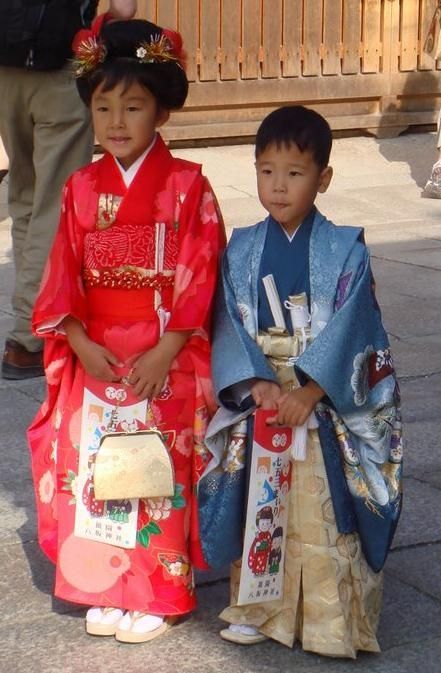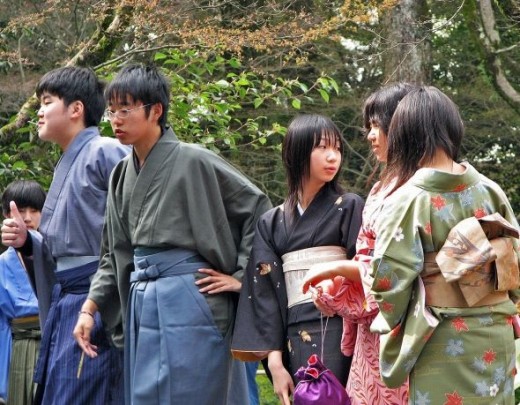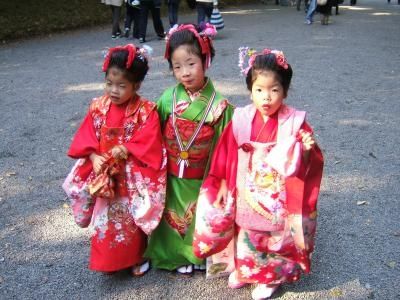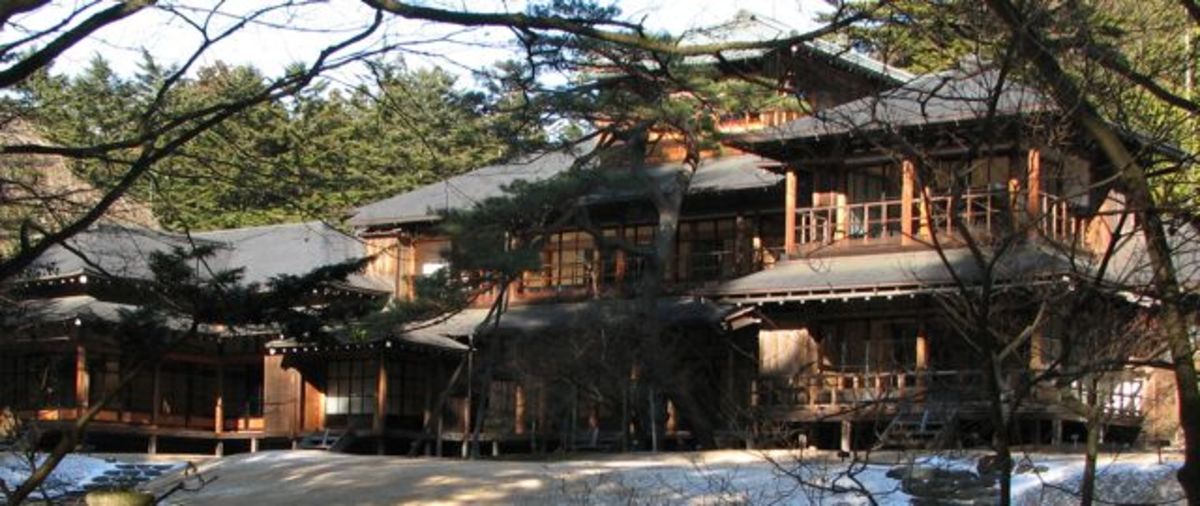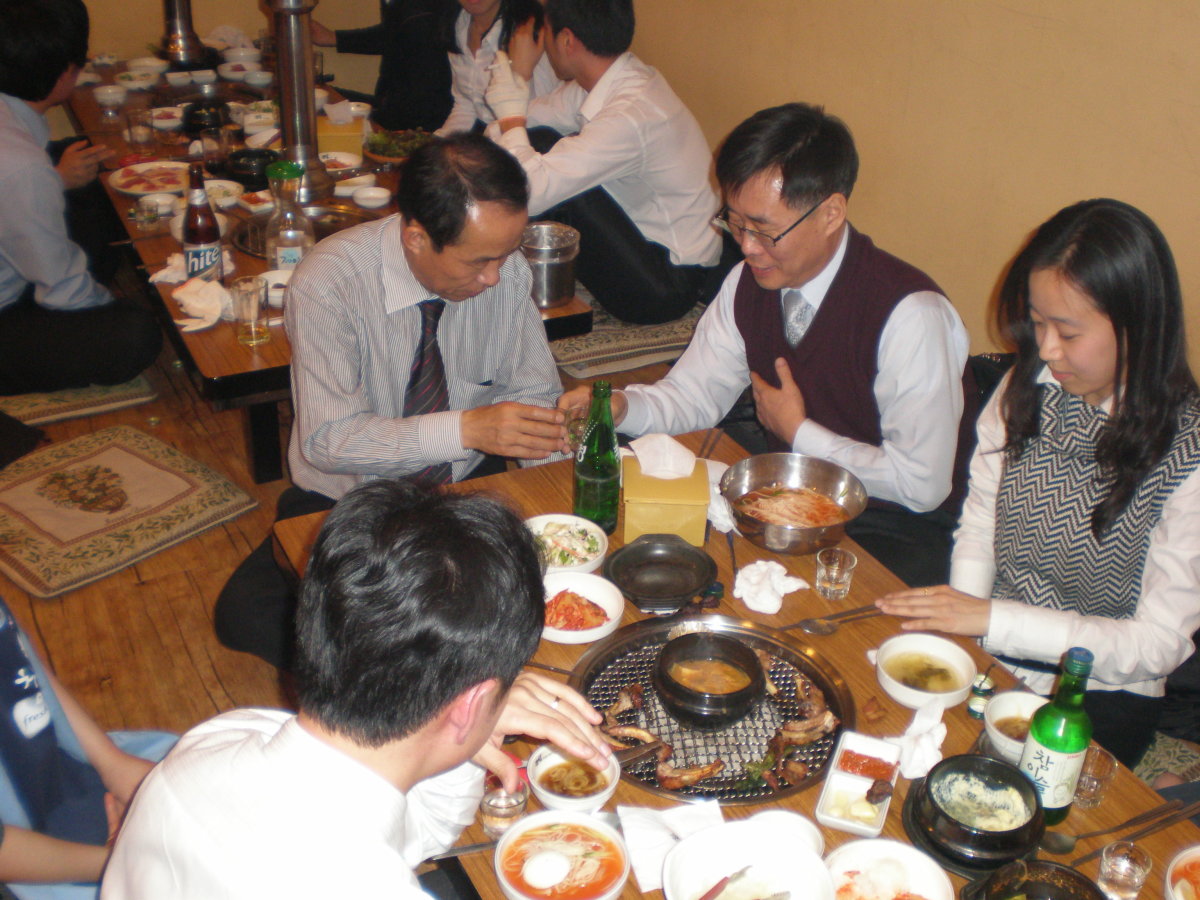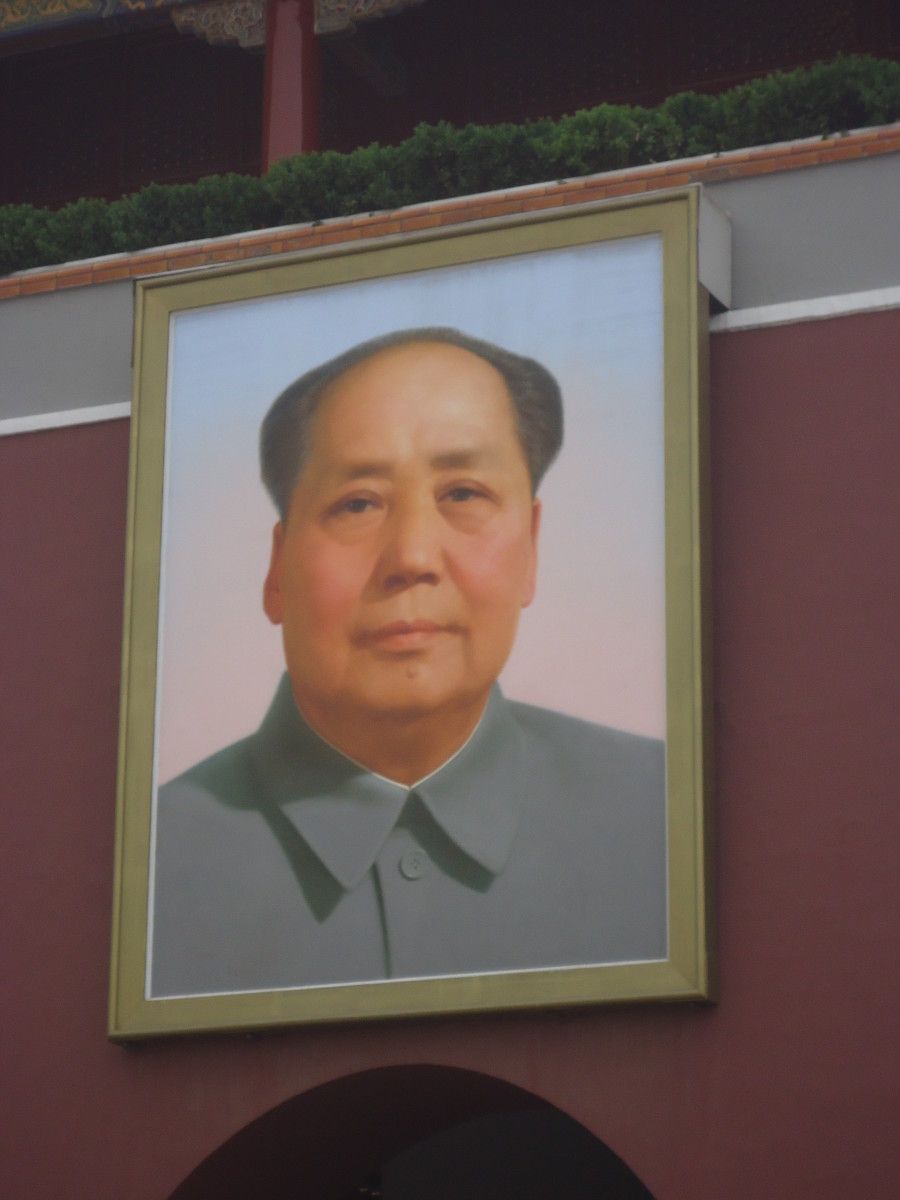The Magnificent Kimono
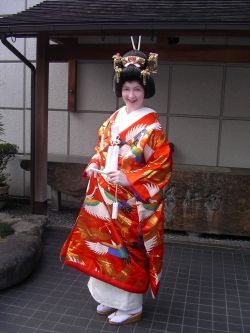
Kimono, A Traditional Japanese Costume
Kimono is commonly known as the traditional Japanese costume that is very much versatile which can be worn both by men and women and even kids. It is way rooted back as early as 5th century AD that is heavily influenced by the traditional Han Chinese clothing. It is composed of T-shaped, straight-lined robes worn so that the hem falls to the ankle, with attached collars and long, wide sleeves and wrapped in a sash called obi as an accessories.
People who mostly worn Kimonos signifies its social status as well as special occasions, weddings, tea ceremonies and even just to appear in public. For those who are interested in Oriental type of clothing for fashion or costuming, it is definitely worth your time to learn about these magnificent Japanese Kimono.
Kimono comes from the word "Ki" means wear and "Mono" means thing literally means "thing to wear".
Women in Kimonos
Click thumbnail to view full-size









Learning about Kimono
All throughout the years, Kimono went through so many drastic changes way back from the ancient times to our modern day. It also named as "gofuku" literally means clothes of Wu.
During Japan's Heian period (794-1192 AD), the kimono became increasingly stylized, though one still wore a half-apron, called a mo, over it. While during the Muromachi age (1392-1573 AD), the Kosode, a single kimono formerly considered underwear, began to be worn without the hakama (trousers, divided skirt) over it, and thus began to be held closed by an obi "belt". Then in the Edo period (1603-1867 AD), the sleeves began to grow in length, especially among unmarried women, and the Obi became wider, with various styles of tying coming into fashion.
Since then, the basic shape of both the men's and women's kimono has remained essentially unchanged. Usually the men's kimonos are more simpler than the women's.
Various Styles of Women's Kimono
Choosing a perfect Kimono for women is really a lot of fun. It is very appropriate to consider the occasion, garment materials, social status, marital status and the woman's age.
Furisode
- Literally means "swinging sleeves" which measures with an average between 39 and 42 inches (1,100 mm) in length. Perfect mostly for formal kimono for unmarried women, with colorful patterns that cover the entire garment, coming-of-age ceremonies (seijin shiki) and by unmarried female relatives of the bride at weddings and wedding receptions.
Homongi
- Literally means "visiting wear" consists of patterns that flow over the shoulders, seams and sleeves, similarly to tsukesage. It can be worn to formal parties both married and unmarried women.
Iromuji
- It is a single colored Kimono worn to tea parties both married and unmarried women.
Komon
- Literally means fine pattern that is more casual and can be worn in everyday usual activities around town and dressed up. Its common type is the Edo Komon.
Mofuku
- Signifies as the mourning dress both for men and women. Mostly it is made of plain black silk with five kamon over white undergarments and white tabi. For women, the obi and all accessories are also black. Men wear a subdued obi and black and white or black and gray striped hakama with black or white zori.
Tomesode
- Consists of two types the: Irotomesode (slightly less formal) usually single-color kimono, patterned only below the waistline. Mostly worn by married woman and close relative of the bride and groom at the weddings. Lastly, the Kurotomesode (most formal) worn by the mothers of the bride and groom during weddings.
Tsukesage
- It is the more modest patterns that cover a smaller area-mainly below the waist-than the more formal hōmongi. They may also be worn by married women.The differences from homongi is the size of the pattern, seam connection, and not same clothes at inside and outside at "hakke.
Uchikake
- It is the highly formal kimono worn only by a bride or at a stage performance. Mostly to be worn outside the actual kimono and obi, as a sort of coat.
Susohiki / Hikizuri
- Literally means "trail the skirt" mostly worn by geisha or by stage performers of the traditional Japanese dance. It is quite long, compared to regular kimono, because the skirt is supposed to trail along the floor.
Men in Kimono
Click thumbnail to view full-size




Kids in Kimono
Click thumbnail to view full-size




Kimonos for Kids
How To Dress a Kimono - DIY Tutorial
Books about Kimono
Learn more about Kimono
- Japanese Culture - Costume - Kimono
An introduction to Kimono, the traditional Japanese dress. - Kimono
About Kimono and Yukata - traditional, Japanese dresses. - KIMONO ENCYCLOPAEDIA - KIMONO
Kimono: Over 55 pages of kimono pictures, kimono style descriptions, kimono history, kimono fashion competitions, places to buy kimonos and articles relating - History of Kimonos - Kimono - Virtual Culture - Kids Web Japan
Originally, "kimono" was the Japanese word for clothing. But in more recent years, the word has been used to refer specifically to traditional Japanese clothing.

